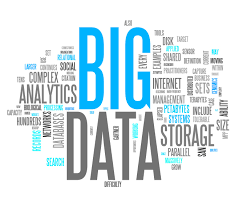Artificial Intelligence? What does it mean, to our industry?
It’s a term you hear wherever you go, and it’s becoming more and more talked about. So I guess before I continue I should actually provide a bit of a definition. In simplistic terms, Artificial Intelligence is when a machine or computer is exhibiting intelligent like behaviour. We saw an example of this recently with IBM’s computer beating a master of the game of Go (a Chinese board game about strategy) and previously winning a game of chess.
The majority of us will throw around the term artificial intelligence, but those who are in that space use more specific terms which I’m going to share with you. Why? You might ask so that when your teenage kids start throwing things around the dinner table, you can sound incredibly intelligent (we can only try).
Another term used is Machine Learning. This is when software improves itself as more data is entered, but the improvements are without people making adjustments or corrections. This is particularly obvious to anyone who has used eBay, Amazon and Facebook as these platforms are learning our behaviours and making suggestions as to what we might buy or what we might be interested in.
Have you ever heard about Deep Learning? You may not have heard about it, but you’re using it, or not. This is when the machine actually uses neural networks with multiple layers, trying to simulate what our own brains do. The best example of this is if you were to ask Google a question verbally, it will convert speech into text and can identify objects in photographs.
Just for the sake of it I’ll give you a few more definitions, Natural Language Processing (NLP) is when a computer can hear conversational language and find the answer to a question. This was recently seen when IBM’s Einstein computer won jeopardy on TV (by the way, it wasn’t connected to the internet during the game).
Here comes a scary one - Cognitive Computing. It’s still in the artificial intelligence space but it’s crazy. It can analyse a medical research paper and make suggestions as to possible new drug treatments. This one is really getting close to how we as humans solve technical problems.
I previously wrote an article about Bots which is a soft form of artificial intelligence. You may see it on a variety of websites where a chat room opens up and tries to behave like a person on the other end answering your questions. This takes a lot of development to get it right passed a few initial obvious questions, and I’m yet to see it done well.
So now that we have the basics out of the way, where is it going to impact on the jewellery industry? I think it’s fair to say that those with deeper pockets will have the ability to access the experts who know how to utilise this technology and apply it in very sophisticated and commercially advantageous ways.
Let’s write a story. Let’s assume you are a large online diamond retailer? I wonder who that could be? You had a lot of money. All the data that has been captured on your website defining how people navigate (by the way you, and I can do this as many of you know). This begins to provide the retailer with incredible insights in terms of buying behaviours. Overlay these patterns with a few million Facebook likes, intersect the data with hundreds of thousands of actual purchases and complement all this with other social media platforms. You begin to understand that this retailer has not only the ability to know their customer back to front and inside out, but they could develop tools which would alert them as to all the other potential customers who are connected with their existing clients who will be in the market for diamond jewellery. This is often referred to as big data. More than likely they will know the exact style, price point and social media medium in which to target them. All this before the potential future customer knows that they are potential buyer for a diamond ring.
all the other potential customers who are connected with their existing clients who will be in the market for diamond jewellery. This is often referred to as big data. More than likely they will know the exact style, price point and social media medium in which to target them. All this before the potential future customer knows that they are potential buyer for a diamond ring.
That’s right. Think about it. A young person gets engaged and all their friends congratulate them on Facebook. The technology picks up their friends’ names, goes into their Facebook, looks at their age, demographics, status of relationship, where they shop, what they buy and what they take pictures of. It then looks at the parallels of the person who just got engaged and can very easily deduce what the offering should be. All this is being done with big data and AI analytics
Historically, as a jewellery retailer, you would think that it’s your relationships that are so critical in building your business. Don’t get me wrong, I still have enormous belief and confidence in the power and strength of those connections. However, if a subliminal and subtle marketing strategy targeted your future customer, they could well be taken down a path even before your network can influence them.
The sheer volume of data that can be accessed and crunched is like replicating yourself 100,000 times and working 24 hours a day seven days a week, to look at each of these potential customers. Then, using your 20-30 years of intuition, to guess if they are a potential customer and how could you get them to look, just take a look, at your business. Oh and did I say now multiply that hundred thousand tenfold.
So what do some of the big brands do in this space?
Through the use of IBM Watson, a supercomputer which specializes in artificial intelligence, IBM’s customers are able to use a service known as tone analyzer. It begins to comprehend the emotional context of an email or chat and is able to drill down and look at the emotional and social aspect of that person’s writing.
I don’t want to drown you in information, but I find it too amazing not to share just a little bit more on this topic.
The marketing person of the future will need to have an intimate understanding of the customer experience which AI will provide. The focus, as always, is on the individual and not customers in general.
Firstly, we need to understand what the individual is telling us each time we communicate – in every email or chat exchange (and apparently in the written form up to 70% of this is tone based). Needless to say when they start to incorporate video, it takes this to a whole another level.
Next, by getting to know customers in real-time and not just asking”what do you want?”. But rather understanding the emotion and sentiment behind an enquiry. One can then appreciate whether the customer wants to engage further, or simply be purely a transactional relationship - i.e. “sell me what I want but don’t contact me unless I contact you”.
Should that potential customer want a higher degree of interaction, the software can pick up on that and direct them to that sort of conversation. Particularly if they’re are high-value potential, but also depending on where they are in the sales cycle.
There is a definite shift by all of us away from providing personal information. If we want to be anonymous, it’s our choice, and we want you to respect that. My mantra in my business is that I will treat you the way I want to be treated, and I’m sure you all feel the same way.
A lot of this technology will become available and viable from a cost point of view, to smaller businesses. I know from many conversations that I’ve had with Jewellers and Diamond Dealers all over the world that they will shake their head and say ”these things are not for me, I have my customers, they are loyal to me, I get lots of referrals“. This could well be true… for now.
I believe that unless we use our networks, apply the warm and fuzzy charm we have perfected over the years, and continue to touch people on a personal level, showing empathy and interest we will fail., However, not incorporating technologies that are available to us, will result in us struggling to grow our businesses.